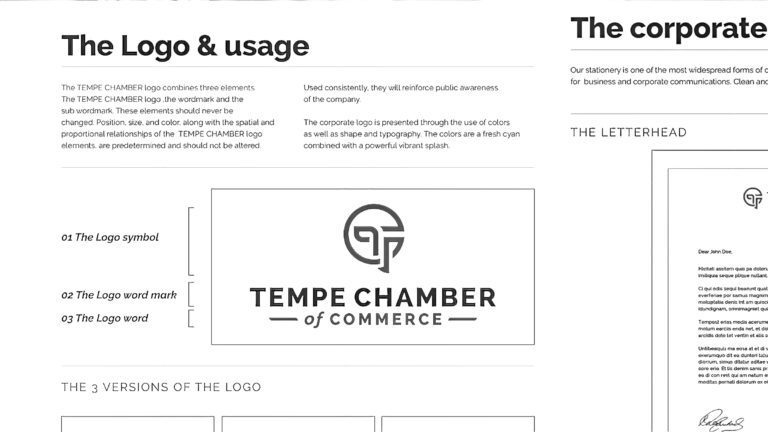Branding is turning a tangible product into ideas, emotions, and attitudes. More than once, we have experienced the qualities of branding, how quickly our mind goes to a brand as soon as we see, read, or hear from those strong brand identities.
Don’t believe us? “Google it” then… Do you see what we did there?
With a strong brand identity, companies can highlight what differentiates their products, fitness brands, and services from the competition. They draw attention not just to their unique main selling points but also to their brand’s personality and how they interact with consumers, or in this case, gym goers.
A successful business with a strong brand identity goes beyond choosing the right name and designing a catchy logo; it considers everything and how its brand image will impact its audience. This strong identity and a careful strategy ensure that their brands can develop an emotional connection with their existing customers and audience that lasts a lifetime.
This guide will give you the vital components of creating a captivating brand identity for your fitness center or gym, complete with essential tips and comprehensive marketing definitions to attract potential clients.



Brand Strategy
Gym branding plays a crucial role in the fitness industry. An experienced team that helps you accomplish your branding goals is exactly what you need.
What Does It Mean to Give Your Gym a Brand Identity?
At its core, a brand identity represents the essence and personality of your gym, making it unique and memorable. It’s making your brand instantly recognizable to your target customers. From your gym’s name, logo, color scheme, palette, and design elements to the values, mission, and experiences you offer. Brand identity goes beyond the physical aspects; it’s about the emotions and perceptions that your gym evokes in your clients’ minds. You’ll have to ask yourself first, what will be my brand’s personality?
The Importance of a Brand Identity
As a fitness expert or someone deeply involved in the fitness world, building a strong fitness brand and identity is like building a strong body. It can’t just be a superficial addition.
Branding is the foundation for your gym’s reputation and success, just like a strong body is built from nutrition and appropriate workouts.
Here’s why it’s crucial:
Differentiation:
In a crowded fitness industry, a distinct brand identity helps your gym stand out. It sets you apart from competitors and communicates what makes your fitness center special. Ask yourself: What are the special features of your gym? What makes it different? What is the main selling point that makes your gym unique? What would your gym sound or look like if your gym were a person?
Recognition:
Here is where creativity comes in handy! Making your brand recognizable is picking the appealing and seductive surface of your brand. Once you’ve settled on your gym’s name, it’s time to focus on its visual identity. This involves selecting the right colors, fonts, and logos that resonate with your gym’s personality. Colors go beyond aesthetics; they have to do with emotions and create an unforgettable image, setting your gym apart from others and ensuring consistency across different graphic elements.
A recognizable logo that can adapt to various platforms is key! Choosing bold fonts adds clarity to your brand. Don’t go for the same color schemes! Choose colors that can go with the selling point of your gym. You don’t have to be predictable (like pink for an all-female gym or silver for a Cross-Fit-oriented one). A well-crafted brand identity ensures that your gym remains memorable and recognizable. It creates a lasting impression that sticks with your clients.
Trust and Credibility:
A consistent brand identity fosters trust and credibility. What does this mean? Clients who can easily identify your gym and associate it with positive experiences are more likely to trust your services. Being a brand that people can trust their fitness journey with assures them that everyone is welcome, that fitness isn’t just for a few, and that, as fitness professionals, you and your team are ready for them.
Authenticity builds trust by showing who your brand truly is, not just using sales talk. It’s about your values, goals beyond profit, and culture. Being real means engaging online, responding to feedback, and admitting mistakes. It’s about creating a brand that people can relate to and trust.
Emotional Connection:
STORYTELLING MATTERS!
There’s nothing worse than sitting down to listen to a sales pitch that sounds like a sales pitch. A strong brand identity enables you to connect with your clients on an emotional level. It allows you to tap into their aspirations, motivations, and desires, building a loyal community. Tell them how you, as the owner, found your way into fitness, how fitness changes your life, and how you can change theirs. If you need inspiration, check out “The Hero’s Journey” and see where yours began.
Find the Perfect Team for Your Brand Identity
As an incredible alliance war chant would cheer, it’s time to “assemble.”
Creating a powerful brand identity involves collaboration from a diverse team. Here’s who you should consider having on board:
Brand Strategist:
These professionals guide the overall brand development process, ensuring that your identity aligns with your gym’s goals and resonates with your target audience. They ensure a company’s message stays the same across all places. They study what customers like and predict future trends, planning products and ensuring everything looks and sounds the same. They also craft new brand names, rebrand them, target audience research, and brand positioning. They help decide how products should feel in people’s minds and make stories that make people care. They also check if everything looks good and sounds right. Additionally, they identify competitors, assess strengths and weaknesses, and foster emotional connections with potential and current customers.
Graphic Designers:
They translate your gym’s essence into visual elements like logos, color palettes, and design elements. Choose wisely! A graphic designer that aligns your vision and goals graphicly and visually is already a step in the right direction.
Content Creators:
NO, they are not Content Media Managers, they do much more than those quirky social media posts you’ve seen in Facebook fitness groups. These individuals craft compelling messages and content that reflect your gym’s identity across various platforms, like blogs, social media copies, video scripts, and more. Choosing the right content creator means knowing what you need from them.
Influencers are not the same as content creators. Setting goals is essential in every marketing strategy, and content creation follows the same rule. Having a clear purpose for a campaign allows you to ensure responsibility and track progress for both yourself and the content creator involved. Their job is to reach your potential customers, creating a loyal following.
Traffic Manager:
They oversee ad campaign flow and optimization, ensuring the right audience sees branded content. Their role intersects with branding by guaranteeing effective content distribution, audience targeting, and, ultimately, new customers.
Selecting Your Gym Branding
All of the above will help you and your gym’s brand identity realize that fitness branding is the sum of various elements that work together harmoniously to create a cohesive and memorable experience for your clients. Stay consistent, that’s the key!
Brand Identity and Brand Perception
A great brand consists of brand perception and identity; although they sound similar, they are intertwined concepts.
Brand Identity refers to how a company presents itself to the world. This includes graphic elements like logos, colors, typography, design styles, great branding, messaging, and even the brand’s name. Essentially, brand identity is how a brand wants to be seen by its audience.
On the other hand, brand perception is how the audience perceives and interprets the brand. It’s the emotional and mental image that forms in the minds of consumers when they think about or interact with the brand. Brand perception is influenced by various factors, including the brand’s identity, customer experiences, interactions with the brand’s products or services, and even feedback from others.
Fitness Brand Identity Elements
Several key elements contribute to a clear understanding of your brand and to a successful branding identity that resonates with your audience and fosters lasting connections.
Help Your Audience Identify Your Approach:
Your gym’s approach to fitness and wellness should be obvious from the moment potential customers encounter your brand. If it stays consistent, then you are on the right track! Whether you focus on high-intensity workouts, holistic wellness, full fitness studios, or specialized training, ensure your messaging, visuals, and experiences reflect this approach.
Create an Emotional Connection with Your Clients:
Emotions play a significant role in brand perception. Craft a brand story that resonates with your target market and audience’s aspirations. Whether it’s about transforming lives, promoting self-confidence, or fostering a sense of community, a compelling narrative creates a deeper bond with your clients, creating customer loyalty.
Make Sure Your Team Shares the Same Values:
Consistency is key to brand identity. Ensure that everyone in your gym, from trainers to front-desk staff, embodies your brand’s core values and messaging. This consistency reinforces your brand identity in every interaction.
Match Your Online Content with Your Brand Identity:
Your online presence is often the first touchpoint clients have with your gym or fitness center. From social media posts to your website, ensure that your online content aligns with your strong brand identity. Use the same color palette, fonts, and tone of voice to maintain a cohesive image.
Upload Content About Your Installations and Services:
Showcasing your gym’s facilities and services through videos, images, and articles can be a powerful way to solidify your brand identity. Highlight the features that set your gym apart and the benefits clients can expect.
Unique Value Proposition
A crucial aspect of your gym’s brand identity is its unique value proposition (UVP). This unique selling proposition is the distinctive advantage that your gym offers to its clients.
Uniqueness in Your Identity:
Identify what sets your gym apart from others. It could be your personalized training programs, cutting-edge equipment, or exceptional customer service. This uniqueness becomes the foundation of your UVP. Here are some steps you should take into consideration:
- Identify your audience’s main problem.
- Identify all the benefits your product offers.
- Describe what makes these benefits valuable.
- Connect this value to your buyer’s problem.
- Differentiate yourself as the preferred provider of this value.
Who’s Going to Be Your Target Audience:
Understand your target audience’s needs, preferences, and pain points. Tailor your UVP to address these aspects, showing how your gym’s offerings can directly benefit them.
Some Aspects to Consider
Creating a robust brand identity requires careful consideration and implementation. Here are some valuable tips to guide you along the way:
Tips for Your Brand Identity:
Consistency: Consistency in branded language across marketing campaigns and all touchpoints is vital. Use the same colors, fonts, and messaging to reinforce your brand identity.
Authenticity: Be genuine in your brand representation. Authenticity builds trust and resonates with clients seeking genuine experiences.
Flexibility: While consistency is crucial, your brand identity should also have room to evolve and adapt to the competitive market, changing trends, and market demands.
Feedback: Listen to customer feedback from your loyal customers and the community you’re building. This can help you refine your brand identity and better align it with your audience’s preferences.
Long-Term Vision: Your brand identity should reflect your long-term vision for your gym. Avoid trends that might quickly fade and focus on elements of brand personality that will remain relevant.



Brand Strategy
A strong brand identity is a key factor to success. With a strong team by your side, accomplishing your branding goals will become an easier task.
Crafting a Lasting Brand Identity for Your Gym
In the immensity of the fitness world, a strong brand identity is a valuable asset that can drive your gym’s success. By understanding the importance of brand identity, assembling the right team, defining your unique value proposition, and implementing key elements, you can create a recognizable brand identity that resonates with clients, fosters emotional connections, and stands the test of time. Remember, a well-crafted brand identity is more than just aesthetics; it’s the soul of your gym, driving its growth and impact in the industry.
Work with us!
At Creatitive, we understand how important it is to create a strong brand identity plan that will properly fit your needs and goals for you to succeed in your fitness center. That is why if you would like an experienced team to help you create the perfect brand identity plan, we encourage you to contact us, and we will happily provide you with all the information and answer any questions you might need.
FAQ’S
Are Collabs a good strategy to solidify my gym brand identity?
Collaboration (collabs) can be a highly effective strategy to solidify your gym’s brand identity. Partnering with complementary businesses, fitness influencers, or local events expands your reach and audience and reinforces your brand’s values and positioning within the fitness community.
What are some of the benefits that a strong gym brand identity provides?
Gyms with a solid and strong brand identity count with many strong assets and benefits that other competitors might find hard to provide to their own businesses; let’s highlight some of the main benefits:
- Customer Loyalty: A well-defined brand identity fosters a sense of belonging and loyalty among gym members. Members who resonate with the brand’s values are more likely to remain loyal and continue their memberships long-term.
- Attracting Talent: A compelling brand identity for customers, talented staff, and trainers who want to be associated with a reputable and respected gym brand. This can help you recruit top talent and build a strong team.
- Adaptability and Growth: A well-established brand identity provides a foundation for future growth and expansion. It allows your gym to adapt to changing market trends while maintaining core brand values and identity, ensuring continuity as your business evolves.
- Increased Revenue: A strong gym brand identity can increase revenue through higher customer retention rates, word-of-mouth referrals, and the ability to charge premium prices for your services. Customers often pay more for a brand they trust and identify with.







